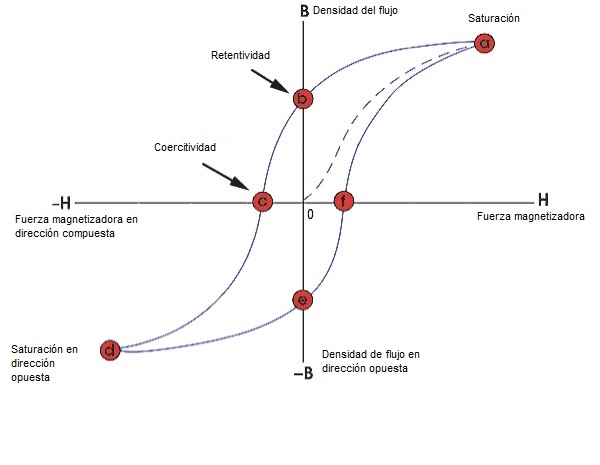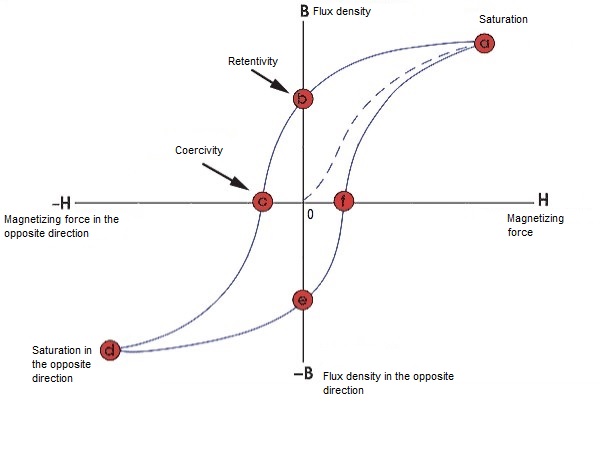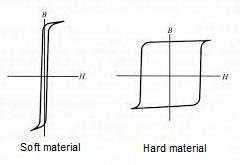
What exactly is remanence?
The remanence or also known as residual magnetism is the ability of a material to retain the magnetism that has been induced, despite not having the presence of an external magnetic field. Depending on the type of magnet, it will have a high or low remanence. For example, the alnico magnet, samarium magnet, and neodymium magnet have a high remanence. However, ferrite magnet has a lower remanence.
The remanence strength indicates the magnetization strength of a magnet. This means that the maximum remanence has a value of the particular material, this value can be known by the hysteresis curve. In this curve, we can see the induced magnetic flux density (B) and the magnetization strength (H) of a material.

The remanence acts differently if the magnetic material is considered hard or soft. Hard magnetic materials, or also known as permanent magnets, have a high degree of permanent magnetism once the magnetic field is absent. On the other hand, soft magnetic materials need a lower percentage of saturation magnetization.

How is magnetic remanence measured?
This remanence is measured by the magnetic flux density. In the same way according to the international system, it is symbolized by gauss or tesla.
10.000Gauss = 1 Tesla.
Types of remanence
There are several types of remanence:
Saturation remanence: saturation remanence is the type of residual magnetism which has the maximum.
Isothermal residual magnetism: it is a method that allows us to measure the residual magnetism of small particles and it is classified as follows:
o DC demagnetization remagnetization: The magnet is magnetized in one direction by applying an electric current until the saturation point is reached.
o AC demagnetization remagnetization: The magnet is magnetized by an external current.
Reduction of residual magnetism: this is the moment when the remanence is reduced through the process of magnetization and demagnetization.
Can remanence be lost?
The demagnetization of a magnet occurs when the remanence value decreases to its maximum. That is, the remanence can disappear in the case of strong vibrations, it is under the presence of high heat. When the degree of temperature is exceeded, we may encounter a loss of the remanence of the magnet. This loss can be reversible, irreversible and permanent, depending on the excess temperature that has been applied to the material.